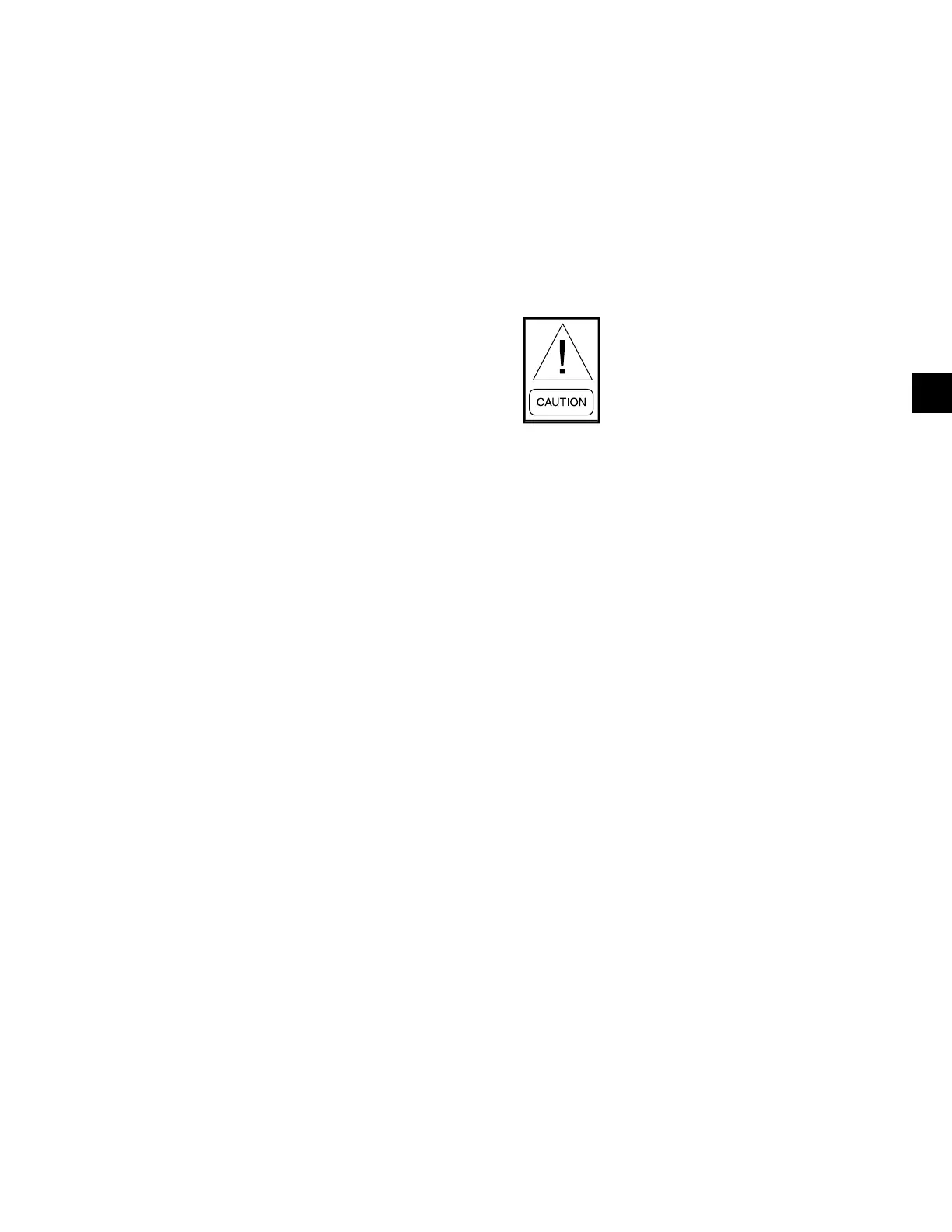JOHNSON CONTROLS
35
SECTION 4 - INSTALLATION
FORM 201.23-NM2
ISSUE DATE: 09/25/2020
4
Evaporator heater mats are installed under the insula-
tion, and are powered from the chiller's control panel.
In sub-freezing conditions, unless the evaporator has
been drained or an appropriate water-to-glycol con-
centration is maintained, high voltage power to the
chiller must be kept on to ensure the heater mats assist
in evaporator freeze protection. If there is a potential
for power loss, Johnson Controls recommends that the
evaporator is drained or that water in the chilled water
circuit be replaced with an appropriate water-to-glycol
concentration.
Any debris left in the water piping between
the strainer and cooler could cause seri-
ous damage to the tubes in the cooler and
must be avoided. Be sure the piping is
clean before connecting it to the evapora-
tor. Keep evaporator nozzles and chilled
liquid piping capped prior to installation
to assure construction debris is not al-
lowed to enter.
The installer/user must also ensure that
the quality of the water in circulation is
adequate, without any dissolved gases,
which can cause oxidation of steel parts
within the cooler.
WATER TREATMENT
The unit performance provided in the Design Guide
is based on a fouling factor of 0.0001 ft2hr°F/Btu
(0.018m2/hr °C/kW). Dirt, scale, grease and certain
types of water treatment will adversely affect the heat
exchanger surfaces and therefore the unit performance.
Foreign matter in the water system(s) can increase the
heat exchanger pressure drop, reducing the flow rate
and causing potential damage to the heat exchanger
tubes.
Aerated, brackish or salt water is not recommended for
use in the water system(s). Johnson Controls recom-
mends that a water treatment specialist should be con-
sulted to determine whether the proposed water com-
position will adversely affect the evaporator materials
of carbon steel and copper. The pH value of the water
flowing through the evaporator must be kept in a range
between 7 and 8.5.
Pipework and fittings must be separately supported to
prevent any loading on the cooler. Flexible connections
are recommended which will also minimize transmis-
sion of vibrations to the building. Flexible connections
must be used if the unit is mounted on anti-vibration
mounts, as some movement of the unit can be expected
in normal operation.
Piping and fittings immediately next to the cooler
should be readily de-mountable to enable cleaning be-
fore operation, and to facilitate visual inspection of the
exchanger nozzles.
The cooler must be protected by a strainer, prefer-
ably of 40 mesh, fitted as close as possible to the liq-
uid inlet connection, and provided with a means of
local isolation.
The cooler must not be exposed to flushing velocities
or debris released during flushing. It is recommended
that a suitably sized bypass and valve arrangement is
installed to allow flushing of the piping system. The
bypass can be used during maintenance to isolate the
heat exchanger without disrupting flow to other units.
Thermometer and pressure gauge connections should
be provided on the inlet and outlet connections of each
cooler. Gauges and thermometers are not provided
with the unit.
Drain and air vent connections should be provided at
all low and high points in the piping to permit drainage
of the system and to vent any air in the pipes.
Liquid system lines at risk of freezing, due to low am-
bient temperatures should be protected using insula-
tion and heater tape and/or a suitable glycol solution.
The liquid pump(s) may also be used to ensure liquid
is circulated when the ambient temperature approaches
freezing point.
Insulation should also be installed around the cooler
nozzles. Heater tape of 21 watts per meter under the in-
sulation is recommended, supplied independently and
controlled by an ambient temperature thermostat set to
switch ON at approximately 4°F, above the freezing
temperature of the chilled liquid.
